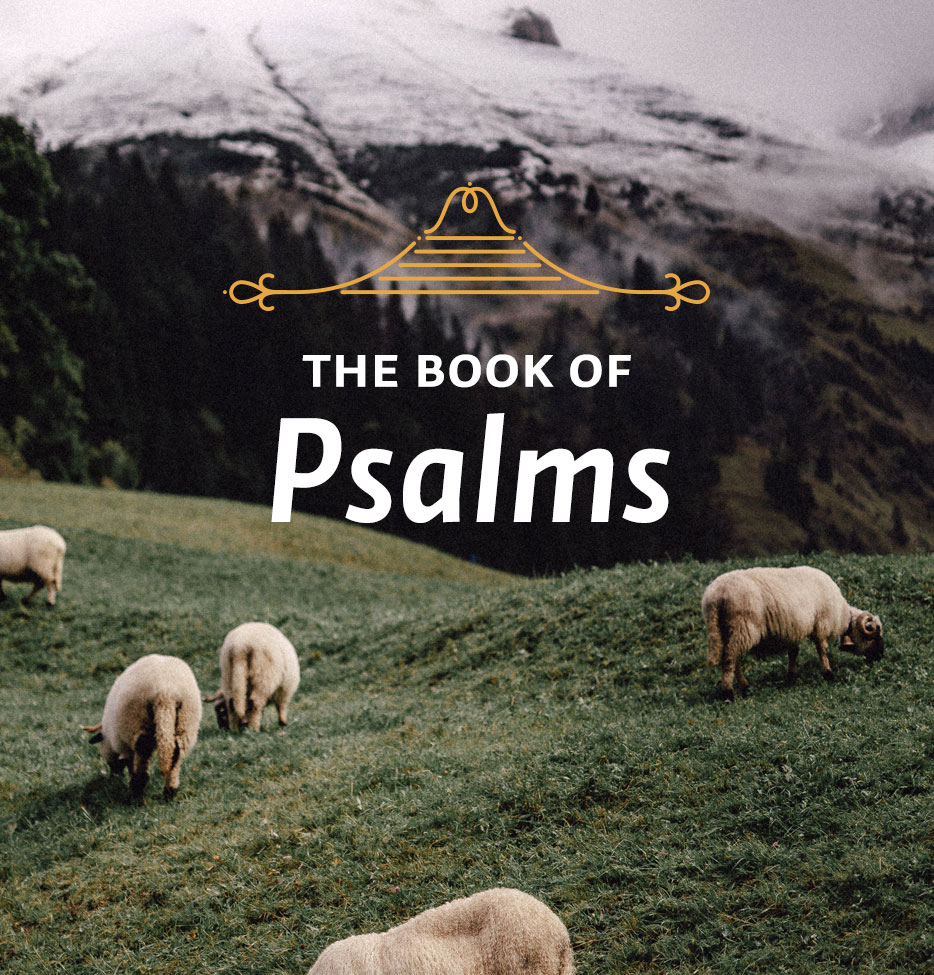Theme: Settled in God
This week’s lessons teach us of the need to rest in the Lord during difficult trials, and to praise him for his faithful care.
Scripture: Psalm 57:1-11
In the last several studies we have looked at psalms which are linked to that early desperate period of David’s life when he was forced to flee into the wilderness from King Saul who wanted to kill him. Psalm 52 began this set of psalms. It refers to Doeg the Edomite who told Saul that David had gone to Nob and had been helped by Ahimelech the priest. Because of Doeg’s self-serving betrayal Ahimelech and eighty-four of the priestly families were killed. Psalm 54 is another such psalm. It tells of David’s betrayal by the Ziphites, who were his countrymen and who should have protected him. Worst of all, Psalm 56 describes David’s desperate plight in the Philistine town of Gath which he went to alone, desperate and afraid.
After David left Gath he faded into the wilderness and hid in a large cave known as Adullam, to which the title of Psalm 57 probably refers.1 David was also alone there, at least at the beginning. But this place was a turning point in his fortune. First Samuel 22 tells us that it was while he was at Adullam that his brothers and his father’s household and all who were in distress or debt or discontented began to gather around him. In all about four hundred men came to him, and he became their leader. Although there is nothing in Psalm 57 to indicate that this had begun to happen by the time the psalm was written, there is nevertheless a very noticeable change in the tone of the composition. The earlier psalms were mostly uncertain, fearful, even desperate. Psalm 57 is settled, and its prevailing note is praise.
What makes the difference? In the earlier psalms David was hiding from his enemies, in Gath or in the wilderness of the Ziphites. Here he is hiding in God, which is what the cave comes to symbolize. David sings a great song in Psalm 57, of course. But if he had not composed Psalm 57 and if he only had our hymn “Hiding in Thee” instead, he might have sung,
O safe to the rock that is higher than I,My soul in its conflicts and sorrows would fly;So sinful, so weary, thine, thine would I be;Thou blest Rock of Ages, I’m hiding in thee.Hiding in thee is what Psalm 57 is about.
How should the psalm be outlined? The psalm’s eleven verses could be divided into three parts:
A call to God for mercy (vv. 1-3)
A description of the problem that caused David to ask for mercy (vv. 4-6)
A concluding praise of God (vv. 7-11)
But in view of the refrain which is repeated in verses 5 and 11, it is best to take the psalm in two main parts, each ending with the refrain. This is the outline suggested by J.J. Stewart Perowne and H.C. Leupold, who says rightly, “The first section, vv. 1-5, is a confident cry for deliverance from cruel enemies; the second section, vv. 6-11, is a resolve to praise God for deliverance.2
Verses 7-11 appear again as the opening verses of Psalm 108 (the second half of Psalm 108 is likewise borrowed from Psalm 60:5-12), and a number of phrases echo words, verses and images found in other places.3
Study Questions:
What accounts for the change in tone within this psalm, as opposed to the other psalms surrounding this period of David’s life?
Read Psalm 57 and review the outline for it from the lesson.
For Further Study: There is no problem or crisis or fear we face that is untouched by the Psalms. This portion of the Word of God has been a source of indescribable comfort, direction, and hope for suffering Christians. And James Boice’s studies both explain it and apply it in very helpful ways. Order your copy of this three-volume set, and receive 25% off its regular price.
1There are two caves to which the heading of Psalm 57 could refer: 1) the cave of Adullam (1 Sam. 22:1, 2); and 2) the cave at En-gedi (1 Sam. 24:1–22). However, it is probably the first because of the obvious connection of this with the preceding psalm.2H.C. Leupold, Exposition of the Psalms (Grand Rapids: Baker, 1969), p. 431. See also J.J. Stewart Perowne, Commentary on the Psalms, 2 vols. in 1 (Grand Rapids: Kregel, 1989), vol. 1, pp. 450, 451. Original edition 1878-1879. Psalms 56 and 59 also have a repeated refrain and can be outlined similarly.3For a good listing see Franz Delitzsch, Biblical Commentary on the Psalms, ed. Francis Bolton (Grand Rapids: Eerdmans, n.d.), vol. 2, p. 173.






